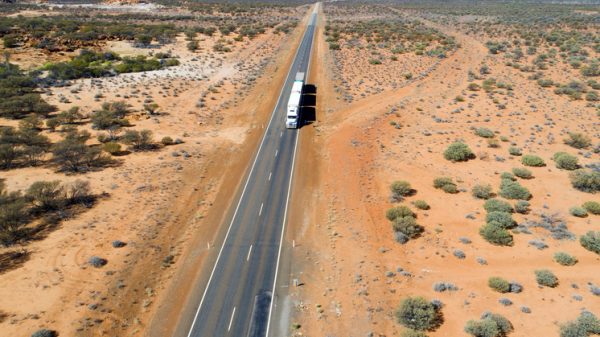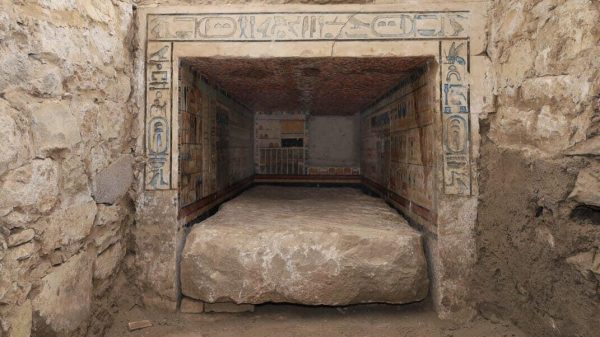An unusual creature lived before the age of dinosaurs
Fangs and a head in the shape of a toilet seat – This is what a fossil resembling a giant salamander looks like, found in Namibia. A creature about 2.5 meters long was a large predator 280 million years ago, even before the era of dinosaurs, scientists say.

Prehistoric fossil hunters in Namibia have discovered a giant 280-million-year-old salamander-like creature that was the apex predator before the age of dinosaurs.
According to The Guardian, this creature, called Gaiasia jennyae, was about 2.5 meters in length, had a huge head in the shape of a toilet seat and terrifying interlocking fangs. It lurks in cold, swampy waters and lakes with its mouth wide open, ready to seize its powerful jaws on any prey foolish enough to swim by.
“When we discovered this huge specimen just lying on the outcrop like a giant nodule, it was really shocking,” said Professor Claudia Marsicano from the University of Buenos Aires, who excavated the fossil with colleagues. – As soon as I saw it, I realized that it was something completely different. We were all very excited.”
Gayasia was probably the top predator in its ecosystem and one of the largest land predators of its time.
“It has a large, flat head shaped like a toilet seat, which allows it to open its mouth and suck in prey. The creature had huge fangs, the whole front part of the mouth was just giant teeth, says Jason Pardo of the Field Museum in Chicago and co-author of the paper describing the fossils. – It is a large predator, but perhaps also a relatively slow ambush predator.
 Photo: fieldmuseum.org
Photo: fieldmuseum.org
The fossil is named after the Gai-As Formation in Namibia, where it was found, and after paleontologist Jenny Clack, who specialized in the evolution of early four-legged vertebrates, from which amphibians, reptiles, and birds evolved. and mammals.
At least four incomplete fossil specimens were discovered, including fragments of a skull and a nearly complete spine. The length of Gayasia's skull was about 60 cm, and the structure of the jaw indicates that it had a powerful bite, capable of capturing large prey.
“After studying the skull, my attention was drawn to the structure of the front of the skull,” says Claudia Marsicano. – It was the only part clearly visible at the time and featured unusually spaced large fangs, creating a unique bite for early tetrapods.
The location of the find is significant because until now, most information about the early evolution of land animals has come from fossils discovered in ancient equatorial wetlands in what is now Europe and North America. At the time this creature lived, modern Namibia was located much further south, almost on the same level as the northernmost point of Antarctica, and was part of the great southern supercontinent Gondwana. While the land near the equator dried out and became covered with forests, swamps remained closer to the poles, perhaps adjacent to patches of ice and glaciers.
The latest discovery shows that, despite the harsh climate, these icy swamps flourished large predators. Fossils bear greater similarities to older vertebrates, while in warmer, drier parts of the world animals appear to have evolved into new forms to one day become mammals, reptiles and amphibians.
“This tells us that what was happening in the far south was very different from what was happening at the equator,” Jason Pardo said. – And this is really important because at that time there were many groups of animals whose origins we don't really know. The more we search, the more answers we can find about these major groups of animals that interest us, such as the ancestors of mammals and modern reptiles.

































































Свежие комментарии